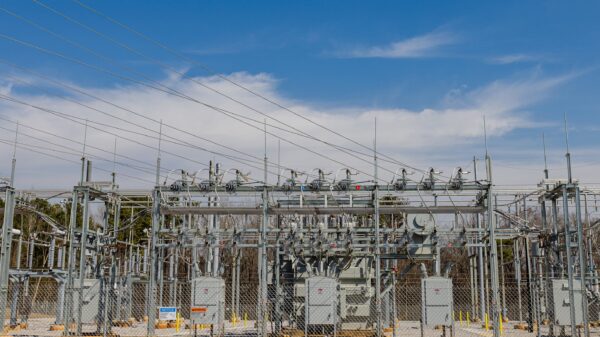Bitcoin giant Riot Platforms Inc (NASDAQ: RIOT) joined its contemporaries in selling off some of its Bitcoin as profits decline throughout the sector.
The company sold 475 Bitcoin worth approximately USD$38.8 million in December at an average price of USD$81,731 per coin, according to a Monday update.
The sell-off follows a year since Bitcoin’s fourth halving event, which halved mining rewards. Miners now receive 3.125 Bitcoin per block, down from 6.25, in a pre-programmed cut every four years. This self-adjusting cut has also squeezed margins for mining operations that rely on a continuous stream of new tokens to cover rising expenses.
In April, Riot Platforms mined 463 Bitcoin, a 13 per cent decrease from the prior month despite maintaining computing power. The firm used 12 Bitcoin from reserves to complete the sale.
Riot sold its monthly Bitcoin production to fund growth and operations, CEO Jason Les said. This reduces the need to raise funds by issuing new shares, which would dilute ownership stakes.
Despite the sell-off, Riot holds 19,211 Bitcoin valued at $1.8 billion.
Riot’s struggles mirror broader trends in Bitcoin mining. The network difficulty level reached nearly 120 trillion hashes on May 4, a 35 per cent increase from last year, according to CoinWarz data.
As more miners compete for the same rewards, they must raise electricity and equipment expenses to mine Bitcoin. Further, this competition has squeezed margins industry-wide, forcing businesses to reassess cash management.
Bitcoin has gained 45 per cent over the past year, trading above USD$95,000 but below its January peak of USD$109,000. This price drop has added pressure on mining companies facing higher costs and lower production.
Read more: Florida joins long list of states to kill Bitcoin bills
Read more: TeraWulf soars 17% on expansion into AI and high performance computing
Bitcoin miners have been selling BTC to meet shortfalls
Riot’s decision is typical of the challenge Bitcoin miners face. Specifically, this is how to balance immediate cash needs with speculation on Bitcoin’s future value. For now, at least one major player is choosing immediate cash over future potential.
Several Bitcoin mining companies have sold BTC to meet shortfalls amid increasing operational costs and declining mining rewards. Marathon Digital Holdings (NASDAQ: MARA), for example, has sold significant amounts of Bitcoin to fund its expansion and pay for rising energy expenses. In 2022, Marathon sold over 3,000 Bitcoin, valuing the sale at over USD$150 million. It used the proceeds to finance its operations and infrastructure development.
Similarly, HIVE Digital Technologies Ltd. (CVE: HIVE) (NASDAQ: HIVE) (FSE: YO0) faced rising energy prices and tightened margins, prompting it to sell portions of its Bitcoin holdings. Hive’s sale helped fund ongoing mining operations and its transition to greener energy, like hydroelectric power, to reduce long-term expenses.
Bitfarms Ltd (NASDAQ: BITF) (TSE: BITF) has also faced cash flow challenges due to the halving event, which reduces mining rewards. In 2022, Bitfarms sold over 3,000 Bitcoin to strengthen its balance sheet and continue scaling its operations.
These companies’ decisions to sell Bitcoin reflect a broader trend in the mining industry. With the Bitcoin network’s increasing difficulty and energy costs rising, miners have had to adjust strategies, choosing liquidity over holding assets. This trend has led to a debate about the sustainability of Bitcoin mining in the face of rising operational costs.
.














